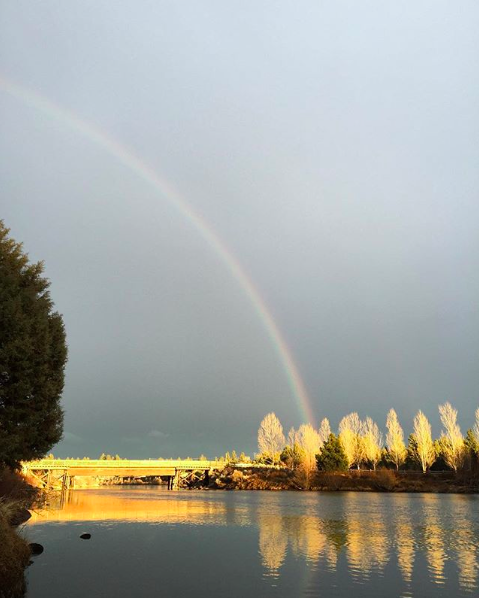Become a Member for as little as $4/mo and enjoy unlimited reading of TSLL blog.
“Happiness is not about being blind to the negatives in our environment; it’s about believing we have the power to do something about them.” – author Shawn Achor from Before Happiness
The reality of the world we live in at first seems to be a constant that we can’t change and something that we have absolutely no control over. After all, the fact is time doesn’t stand still, therefore we increase in age each second; the fact is your past occurred and you can’t change it or go back in time and do anything differently; but the fact is, you actually can change your perception of reality.
I know this sounds absurd and perhaps impossible on its surface, but after reading Shawn Achor’s best-selling book Before Happiness: The Five Hidden Keys to Achieving Success, Spreading Happiness and Sustaining Positive Change, I came to realize that indeed how we perceive the reality we are in and expect to be in each day can shift. And that shift can make the difference between happiness and sadness, fulfillment and failure.
While I was reading the book, I realized that I had recently experienced exactly what he spoke about regarding this image we construct in our minds of how something should go or will go, and how often our misunderstanding or limited perspective of how events will unfold is precisely how we make the barriers that stand in the way of success.
Over the holiday break a few weeks ago, I signed up for a introductory rock climbing class with one of my close friends. Always wanting to learn how to climb, but for some reason never making time or being near a location that offered the opportunity when I did, I finally pounced at the chance when my schedule was free.
After the instructions of how to tie our ropes, how to belay for our partner and how to check our partners for all of the safety checks had been covered and reviewed repeatedly, we began getting psyched up for our first climb. And then I felt a twinge of fear. I was shocked at the subtle trepidation I was feeling. Now keep in mind, I am someone who has a great abiding respect for gravity. I wouldn’t say I am altophobic, but I will not tease the gods of gravity and walk out on a glass ledge for example at Chicago’s Willis Tower. No, that will not be me.
However, I was securely in my harness and this rock wall was man-made and indoors; so many variables were in my partner and I’s control. Still, I noticed it, but I wasn’t going to let it stop me, not for a moment.
Fast forward to my first climb. Upon scaling halfway up the wall without looking down the majority of the time, I was fine, and then I stopped. Not a good idea. I swiveled my head around and noticed the grand distance between me and the floor. Neck breaking, legs snapping – not images I wanted swirling around in my head. So I promptly asked my friend to lowered me to the ground.
I was frustrated. Why? More than anything I was frustrated with myself because I knew, rationally, I had nothing to truly be afraid of. Yes, I needed to respect the process and properly follow the procedures, but knowing I had done that, I had nothing to fear.
Second climb. Upon taking a different route, (later I realized it was a more difficult route, but my ignorance at the time was probably a blessing), I had climbed approximately two thirds up the wall and stopped. My eyes began to water, my heart seemed to tighten slightly, and I swallowed hard. Please note, that children and other calm adults were blazing past me as if this wall was lying flat on the ground. Why then was my stomach beginning to knot?
My previously set reality had it all wrong.
I had created images and primed the pump full of reasons to be fearful, when I also knew I was more than capable so long as I had the right tools, a partner I could trust and the physical capabilities. So for those last few moments, while respecting the fact that I was as high as I was, I didn’t look down until I reached the top, and yes, I did reach the top. With every subsequent climb, I’ve never felt that particular fear again. It was as if I finally broke a bubble that I had placed around me. And while I don’t make it to the top each time, nor do I have the most graceful or technically sound abilities as I figure out my way, I’ve made to the top more often than not.
So why share my experience? Let me explain.
1. Break Through Self-Imposed Barriers
Just as I had placed this fear of heights while rock-climbing on my shoulders unnecessarily, imagining all of the atrocities that could happen should something go wrong, I had chosen to view reality through a lens that was not the most conducive to success. In Achor’s book, he discusses the three strategies for how to choose the most valuable reality, and strategy one brings to light the fact that there are multiple versions of reality.
Yes – multiple versions. What does he mean? Take stress for example. Achor explains that while yes (reality #1) stress has been proven to be damaging to our health and immune system, it is also equally true (reality #2) at even high levels to “create greater mental toughness, deeper relationships, heighten awareness, new perspectives, a sense of mastery a greater appreciation of life, a heightened sense of meaning and strengthen priorities.”
So let’s look at the rock climbing scenario ago. Reality #1: Rock climbing is dangerous. Could lead to broken limbs or loss of life. Absolutely true. There is no question about it. Reality #2: Rock climbing is a unique approach to working out as it requires a coordination of strength, endurance and flexibility. In order to be successful, I will be motivated to be disciplined in my workout regime. Also, true.
In other words, when we shift our perspective, we gain more knowledge and insight. It doesn’t mean we are ignoring the negative or pretending it doesn’t exist that would be what Achor calls being an irrational optimist. Rather we are actually opening more doors and opportunities for success which we will talk about in point #2 below.
2. Increase Happiness & Success
Understandably, a cynic or pessimist will be less likely to truly be happy as they always assume the worst which ultimately deflates not only their potential to be happy but those around them. However, if we choose to identify multiple realities to one scenario – our work day, unexpected news, our love life – we open up our minds and realize there are truly more than one reality.
Achor shares that researchers have found that when we add vantage points to a scenario, we improve our creativity and innovation. And when we increase these two aspects of our lives, we become better problem-solvers, innovators and ultimately begin to curate the life we may never thought could have existed if we had chosen to exist in the original first (potentially negative) vantage point.
3. Use Stress as Productive Tool
“While stress is inevitable, its negative effects are not.”
As I mentioned in the example above, our interpretation of stress and how it can affect our lives has multiple realities. And as soon as we choose the reality that will provide the most value to our lives (#2), we can actually harness its impressive power to motivate us to even greater success.
How? Achor reminds us to get to the bottom of the meaning of the stress. Job interview? An opportunity for promotion, growth. A date? An opportunity to see life from a different perspective, meet a new friend or relax and enjoy an evening out.
Much like fear and change, stress will always be present in our lives; however, it is how we handle it that will make a difference in our overall happiness and success.
A tremendous aha moment for us all is when we realize that our thoughts create the world we live in more so than we realize. By welcoming more new and different experiences and perspectives we actually unwrap the gift of opportunities as we can now connect the dots of how new ideas may work together.
In other words, our reality cannot grow unless we choose to see them differently, unless we choose to turn around and look at it from another angle. Instead of our boss not appreciating our work, maybe our boss had a few other pressing matters that we didn’t know about and the oversight was nothing personal. Instead of spinning your wheels trying to protect yourself from being hurt when it comes to relationships, spend your finite energy on how to enjoy the present moment with them and let tomorrow bring what it will. What you bring to every scenario you are in helps predict the outcome. Bring a good attitude of resilience and determination, most likely you will run into more opportunities and visa versa.
So today, ask yourself, what realities are you living in that aren’t productive for the life you are trying to live. Start with one, and then gradually train your mind to shift by default to the most valuable path for success.
Even if you don’t wish to rock climb, trust me when I say, that often we do put the barrier up that stands in our way. And if we put it there, we can remove it. Have faith and confidence in yourself.
~”El Capitan’s Dawn Wall: Coverage of the Ascent” via The New York Times
~Portland Rock Gym, classes – Intro 101
~Expand Your Mind – Travel the World (click to find Mark Twain’s quote mentioned in the podcast)
~A progression of photos of my friend Nancy from beginning to the top of the route, I am on the left in purple (photo credit to Kevin, thank you)~
~SIMILAR POSTS FROM THE ARCHIVES YOU MIGHT ENJOY:
~Petit Plaisir
~Sweet or Savory Palmiers (click here for the recipe and step-by-step picture guide)




